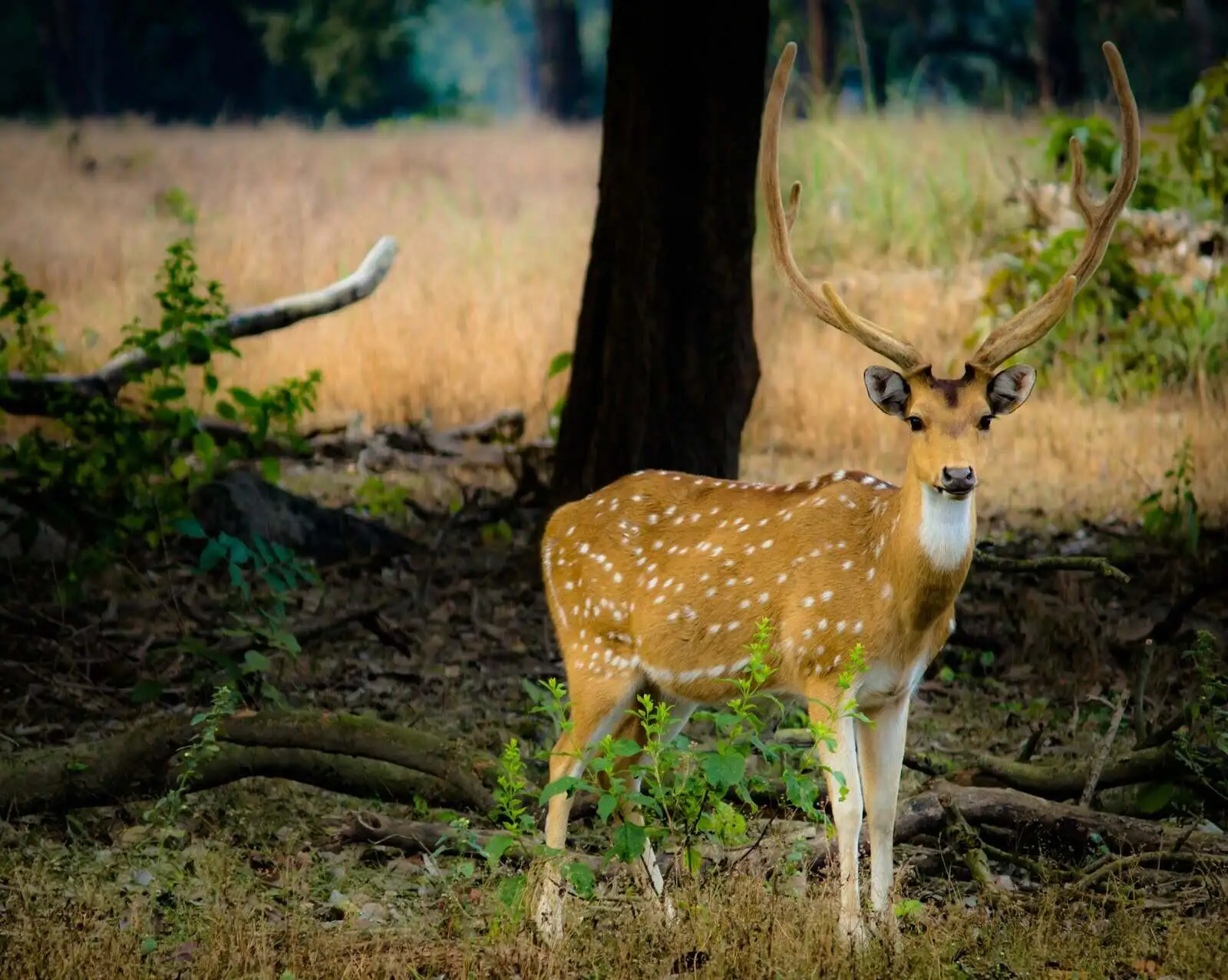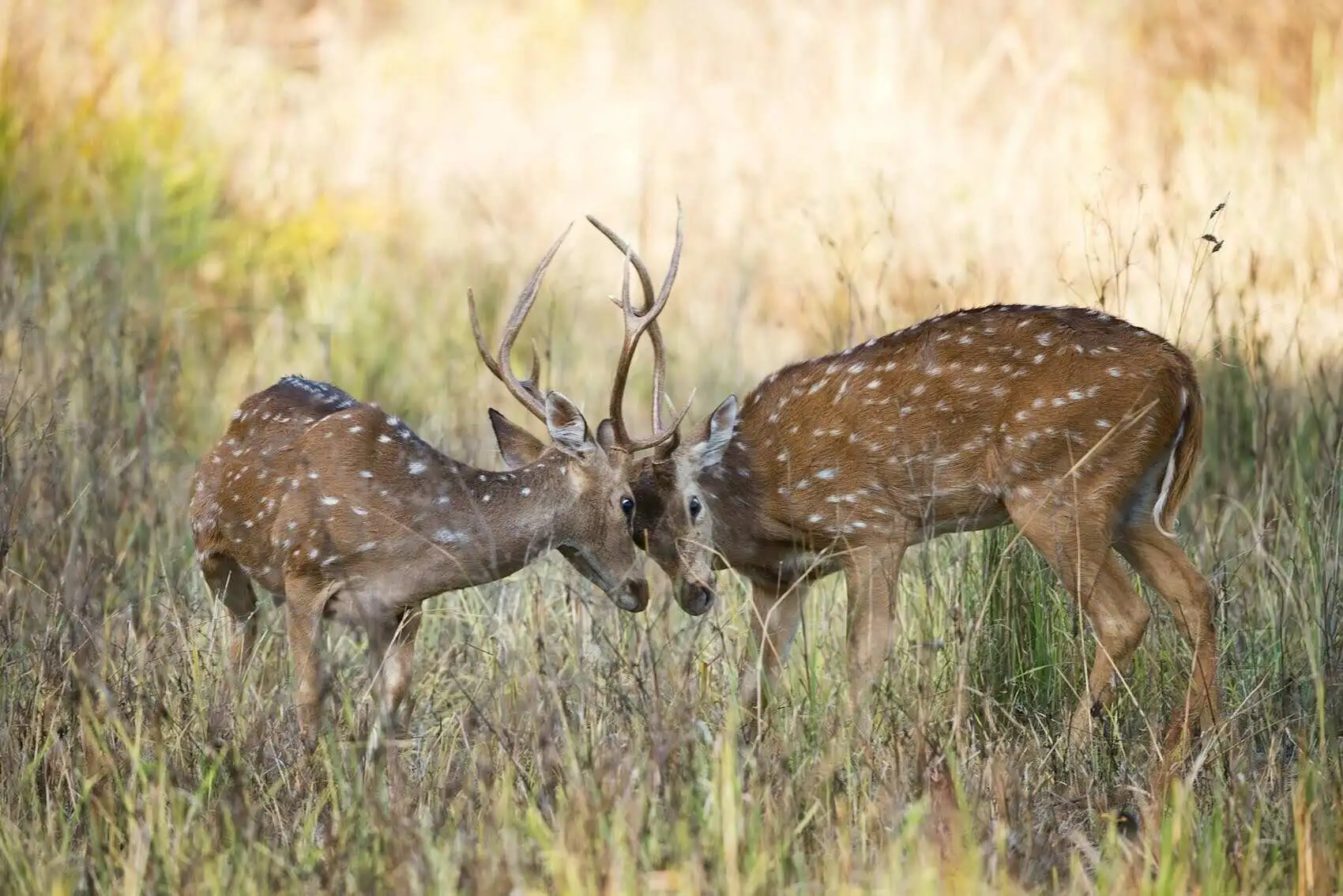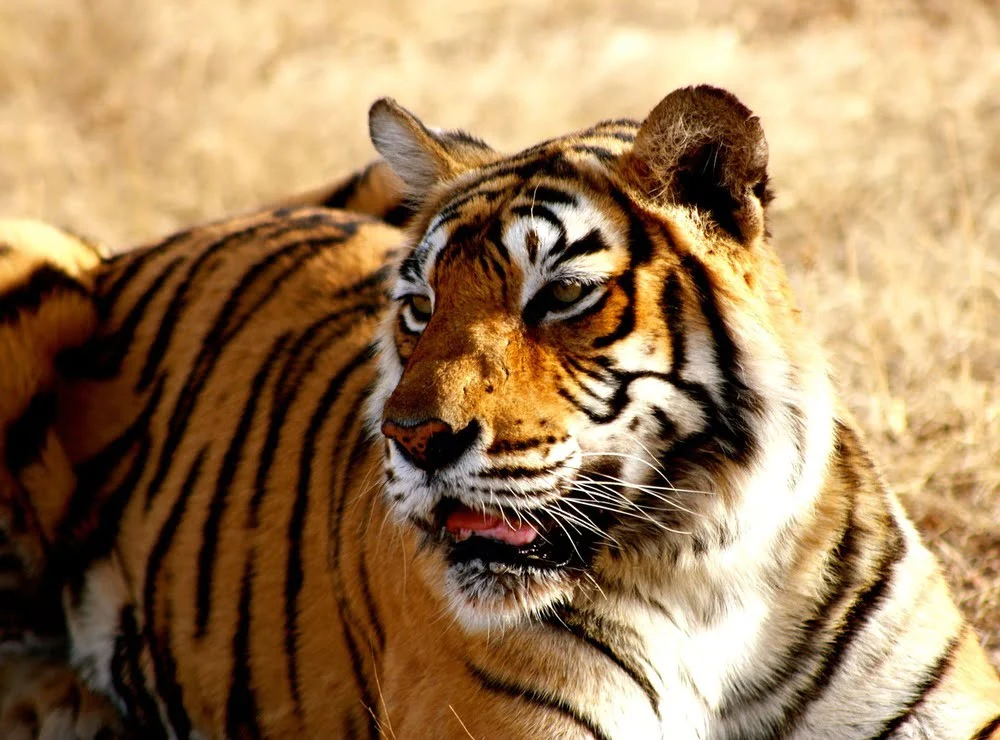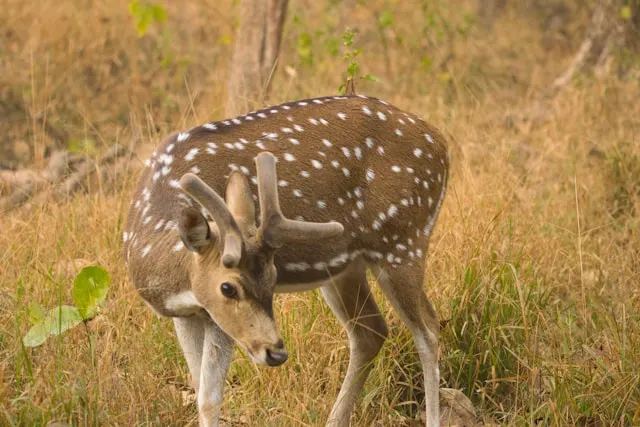Home / Wildlife Photography
Wildlife Photography in Pench
Wildlife Photography in Pench National Park
Pench National Park is a dream destination for wildlife photographers. With its picturesque teak forests, rolling hills, and tranquil water bodies, the park provides the perfect backdrop for capturing breathtaking shots of Central India’s wildlife. Whether it’s the majestic Bengal tiger emerging from the woods, playful wild dogs on the hunt, or vibrant birds perched along the Pench River, every safari in Pench offers a chance to frame nature’s raw beauty and untamed spirit. Photographers will also find golden opportunities during sunrise and sunset, when the forest glows with magical light and wildlife activity peaks.
Why Pench is Perfect for Wildlife Photography
Pench’s landscape is a stunning blend of teak forests, rolling hills, and glistening water bodies, a perfect natural studio for wildlife photographers. The park’s diverse terrain and rich wildlife activity offer countless opportunities to frame moments of raw wilderness and natural beauty. Pench is home to an incredible range of species, including:
Tigers and Leopards: The star attractions, often photographed near waterholes or forest clearings.
Wild Dogs (Dholes) and Jackals : Great for dynamic action shots and group behavior photography.
Gaur, Deer, and Langurs : Ideal for portrait and habitat compositions in open meadows.
Over 250 Bird Species : From Indian rollers and crested serpent eagles to kingfishers and orioles, making it a paradise for bird photographers.
With its mix of vibrant wildlife, dramatic lighting, and tranquil scenery, Pench provides every photographer a chance to capture nature at its finest.
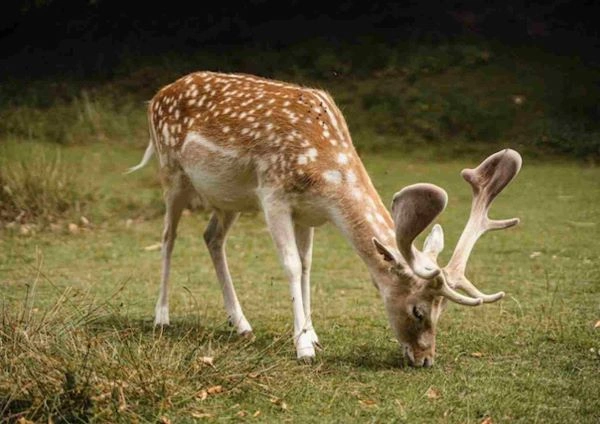
Best Zones for Photography
Touria Zone: Known for frequent tiger sightings and beautiful forest trails, perfect for capturing big cats.
Karmajhiri Zone: Offers dense teak forests and peaceful landscapes ideal for mood and habitat shots.
Jamtara Zone: Great for photographing deer herds, wild dogs, and birds around the water bodies.
Buffer Zones: Excellent for offbeat photography, village scenes, and birding away from the crowds.
To truly tell Pench’s photographic story, explore multiple zones, experiment with light during early mornings and late evenings, and let the forest reveal its magic through your lens.

Tips for Wildlife Photography in Pench
Use a Telephoto Lens: A 200mm or higher focal length is ideal for capturing Pench’s wildlife from a safe distance without intrusion.
Focus on Early Mornings and Evenings: The soft golden light filtering through the teak forests during sunrise and sunset adds a magical touch to your photos.
Be Patient and Observant: Pench’s wildlife often rewards those who wait; staying alert to sounds and movements can lead to unexpected, powerful shots.
Respect the Wilderness: Maintain silence, avoid flash, and follow your guide’s instructions to ensure both your safety and the animals’ comfort.
Pack Smart: Carry extra batteries, memory cards, a bean bag for jeep shots, and a waterproof camera cover to be prepared for any situation.
Whether you’re a seasoned photographer or a passionate beginner, Pench’s blend of wild beauty and natural light offers endless opportunities to create truly captivating images.
Best Seller Packages
2 Nights / 3 Days
Pench Weekend Tour
3 Nights / 4 Days
Pench Budget Tour
6 Nights / 7 Days
Pench - Tadoba Safari
9 Nights / 10 Days
Pench, Kanha & Tadoba Tiger Safari
Capture Memories that Last a Lifetime
FAQs – Wildlife Photography in Pench
Is Pench National Park good for wildlife photography?
Yes. Pench is one of Central India’s best photography destinations, offering diverse wildlife, scenic teak forests, meadows, and water bodies — perfect for capturing both action and landscape shots.
What is the best time of day for photography?
Early mornings and late afternoons are ideal, as the soft golden light enhances the forest’s natural colors and increases chances of spotting wildlife.
Which zones are best for photography?
Touria: Frequent tiger sightings and open forest trails.
Karmajhiri: Dense forests and serene landscapes.
Jamtara: Excellent for deer, wild dogs, and bird photography.
Buffer Zones: Great for birds, rustic village views, and offbeat forest scenes.
Can I use a camera on jeep and canter safaris?
Yes. Both safari types allow photography. Jeeps provide more flexibility and closer positioning, while canters offer wider angles and group perspectives.
How many safaris should I plan for good photo opportunities?
Plan at least 2 – 3 safaris to explore different zones, lighting conditions, and maximize your chances of capturing tigers, leopards, and Pench’s vibrant birdlife.

